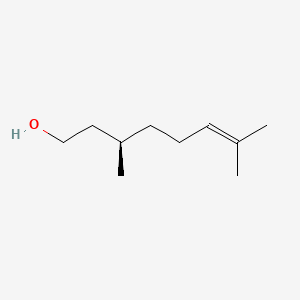| Authors | Title | Published | Journal | PubMed Link |
|---|---|---|---|---|
| Mulyaningsih S et al. | Antibacterial activity of essential oils from Eucalyptus and of selected components against multidrug-resistant bacterial pathogens. | 2011 | Pharm Biol | pmid:21591991 |
| Niu Y et al. | Characterization of odor-active compounds of various cherry wines by gas chromatography-mass spectrometry, gas chromatography-olfactometry and their correlation with sensory attributes. | 2011 | J. Chromatogr. B Analyt. Technol. Biomed. Life Sci. | pmid:21727038 |
| Zhang JS et al. | Repellent constituents of essential oil of Cymbopogon distans aerial parts against two stored-product insects. | 2011 | J. Agric. Food Chem. | pmid:21819085 |
| Verma RS et al. | Volatile constituents of essential oil and rose water of damask rose (Rosa damascena Mill.) cultivars from North Indian hills. | 2011 | Nat. Prod. Res. | pmid:21711177 |
| Dhake KP et al. | Improved activity and stability of Rhizopus oryzae lipase via immobilization for citronellol ester synthesis in supercritical carbon dioxide. | 2011 | J. Biotechnol. | pmid:21884733 |
| Weldon PJ et al. | Anointing chemicals and hematophagous arthropods: responses by ticks and mosquitoes to citrus (Rutaceae) peel exudates and monoterpene components. | 2011 | J. Chem. Ecol. | pmid:21409496 |
| Schulte RR et al. | Cytosolic phospholipase A2 as a molecular target for the radiosensitization of ovarian cancer. | 2011 | Cancer Lett. | pmid:21397389 |
| Wang M et al. | Stimulation of A(â‚‚a) adenosine receptor abolishes the inhibitory effect of arachidonic acid on the basolateral 50-pS K channel in the thick ascending limb. | 2011 | Am. J. Physiol. Renal Physiol. | pmid:21209003 |
| Schleheck D et al. | Complete genome sequence of Parvibaculum lavamentivorans type strain (DS-1(T)). | 2011 | Stand Genomic Sci | pmid:22675581 |
| Gilpin S et al. | In vitro human skin penetration of geraniol and citronellol. | 2010 Jan-Feb | Dermatitis | pmid:20137738 |
beta-Citronellol
Beta-citronellol is a lipid of Prenol Lipids (PR) class. The involved functions are known as Glycolysis.
Cross Reference
Introduction
To understand associated biological information of beta-Citronellol, we collected biological information of abnormalities, associated pathways, cellular/molecular locations, biological functions, related genes/proteins, lipids and common seen animal/experimental models with organized paragraphs from literatures.
What diseases are associated with beta-Citronellol?
There are no associated biomedical information in the current reference collection.
No disease MeSH terms mapped to the current reference collection.
PubChem Associated disorders and diseases
What pathways are associated with beta-Citronellol
There are no associated biomedical information in the current reference collection.
PubChem Biomolecular Interactions and Pathways
Link to PubChem Biomolecular Interactions and PathwaysWhat cellular locations are associated with beta-Citronellol?
There are no associated biomedical information in the current reference collection.
What functions are associated with beta-Citronellol?
Related references are published most in these journals:
| Function | Cross reference | Weighted score | Related literatures |
|---|
What lipids are associated with beta-Citronellol?
There are no associated biomedical information in the current reference collection.
What genes are associated with beta-Citronellol?
There are no associated biomedical information in the current reference collection.
What common seen animal models are associated with beta-Citronellol?
There are no associated biomedical information in the current reference collection.
